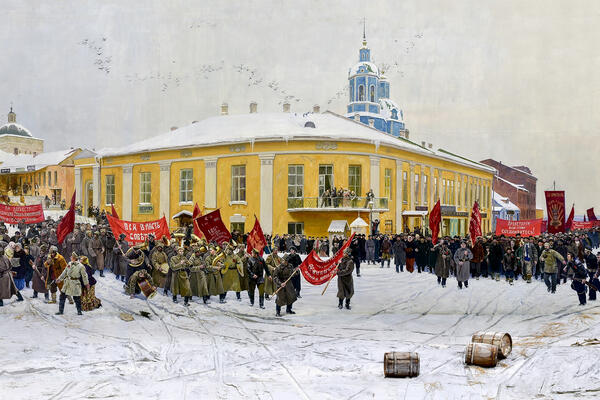The exhibition “Characters and Events of Vyatka History” at the Diorama Museum and Exhibition Center is dedicated to the eventful history of the old city of Kirov. Visitors will find out what this small provincial town looked like at the turn of the 20th century, learn about Vyatka merchants and successful craftsmen, the development of industry and the railway, the appearance of gymnasiums, photo studios, and hospitals, the contribution of the Vyatka zemstvo to the life of the community, and the rapid growth of the revolutionary movement, which resulted in the October Revolution of 1917.
The exhibition also provides information about the famous Vyatka citizens who brought fame to the region throughout several centuries and many generations. These include both people who were born in Vyatka and those who ended up there by a twist of fate.
Visitors will become acquainted with the poet Yermil Ivanovich Kostrov who was the first person to translate Homer’s Iliad into Russian; the photographer Sergey Alexandrovich Lobovikov who was one of the pioneers of Russian art photography; the architect and painter Alexander Lavrentyevich Vitberg who designed the Alexander Nevsky Cathedral in Vyatka, the merchant and honorary citizen Tikhon Philippovich Bulychev, as well as other Vyatka merchants, governors, scientists and industrialists.
The exhibition also provides information about the famous Vyatka citizens who brought fame to the region throughout several centuries and many generations. These include both people who were born in Vyatka and those who ended up there by a twist of fate.
Visitors will become acquainted with the poet Yermil Ivanovich Kostrov who was the first person to translate Homer’s Iliad into Russian; the photographer Sergey Alexandrovich Lobovikov who was one of the pioneers of Russian art photography; the architect and painter Alexander Lavrentyevich Vitberg who designed the Alexander Nevsky Cathedral in Vyatka, the merchant and honorary citizen Tikhon Philippovich Bulychev, as well as other Vyatka merchants, governors, scientists and industrialists.
Exhibits are marked with AR stickers for identification purposes.

